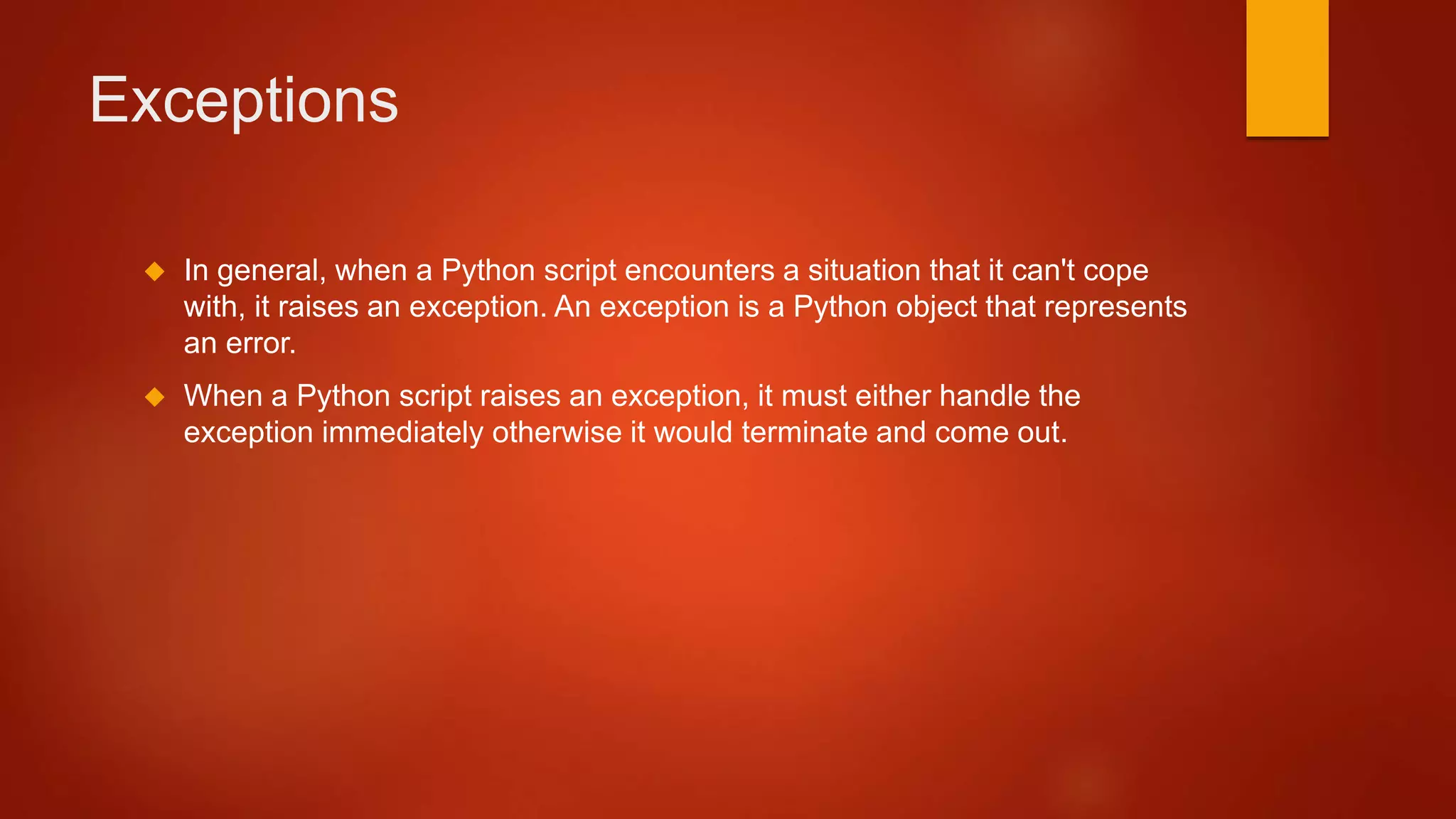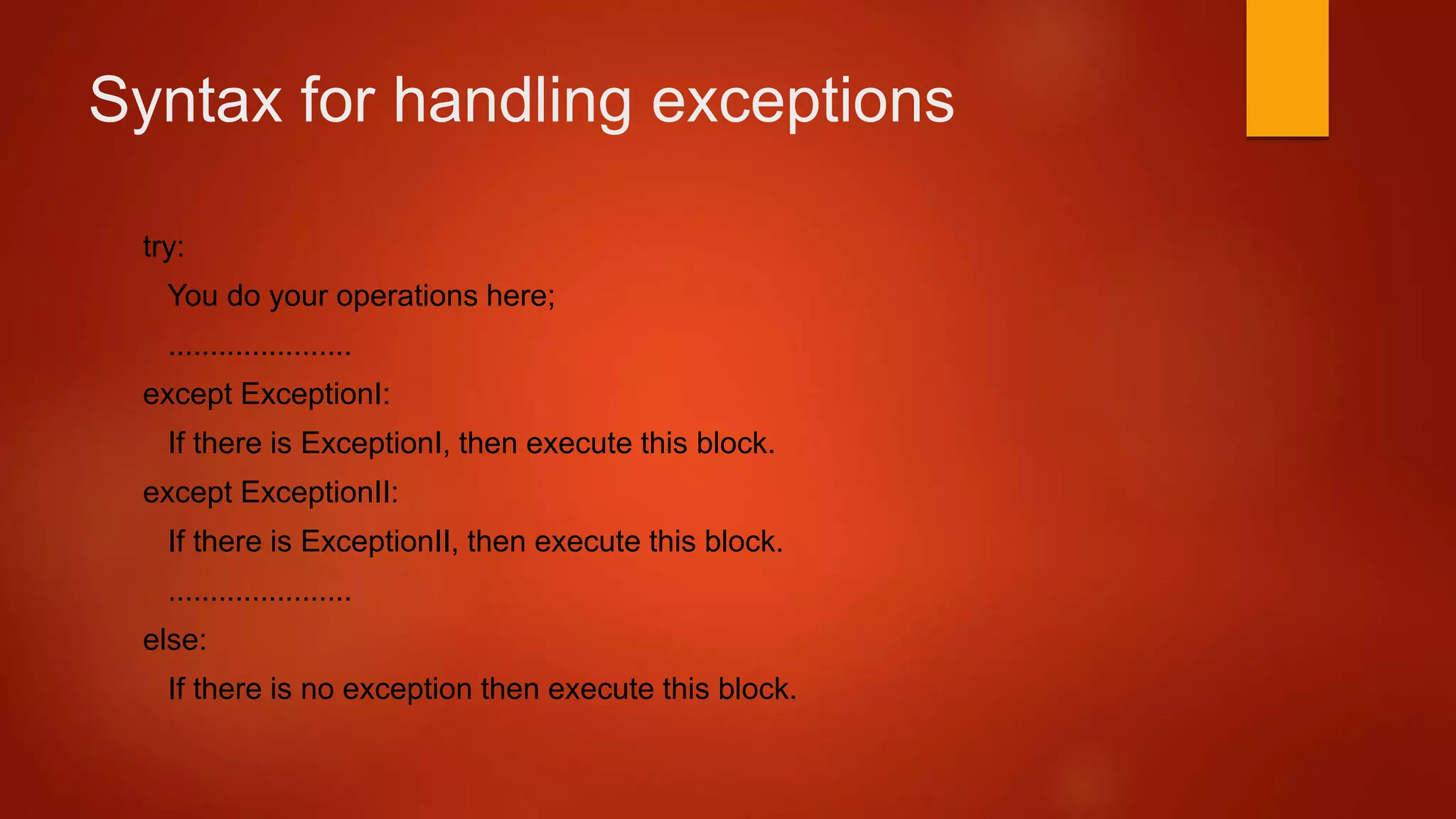The document is a class guide for teaching Python programming, focusing on modules, file input/output, and exception handling. It explains how to use Python modules, manipulate files with the open() function, and handle exceptions using try-except blocks. Additionally, it includes resources for further learning, such as a link to a Facebook group.

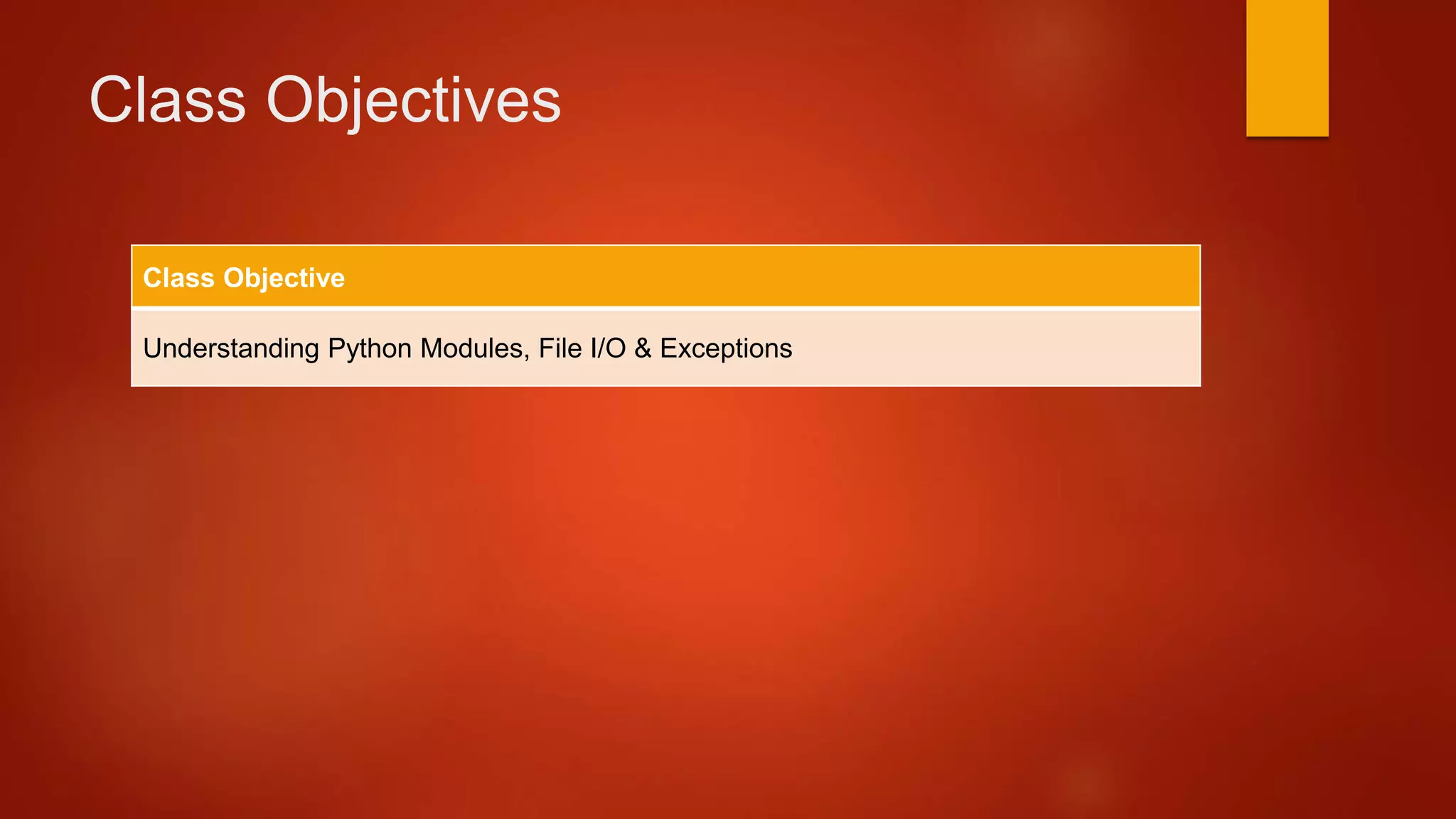
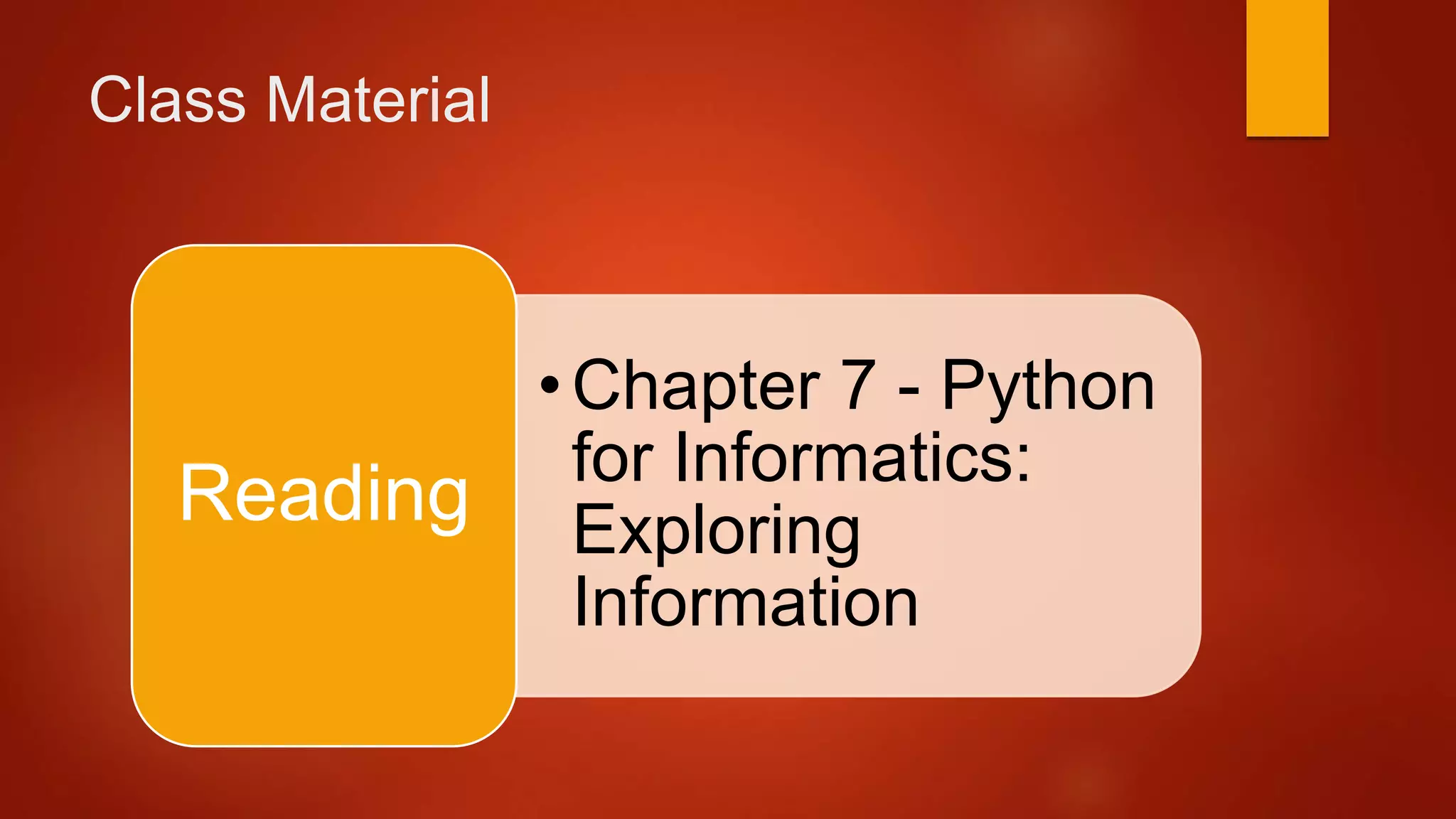
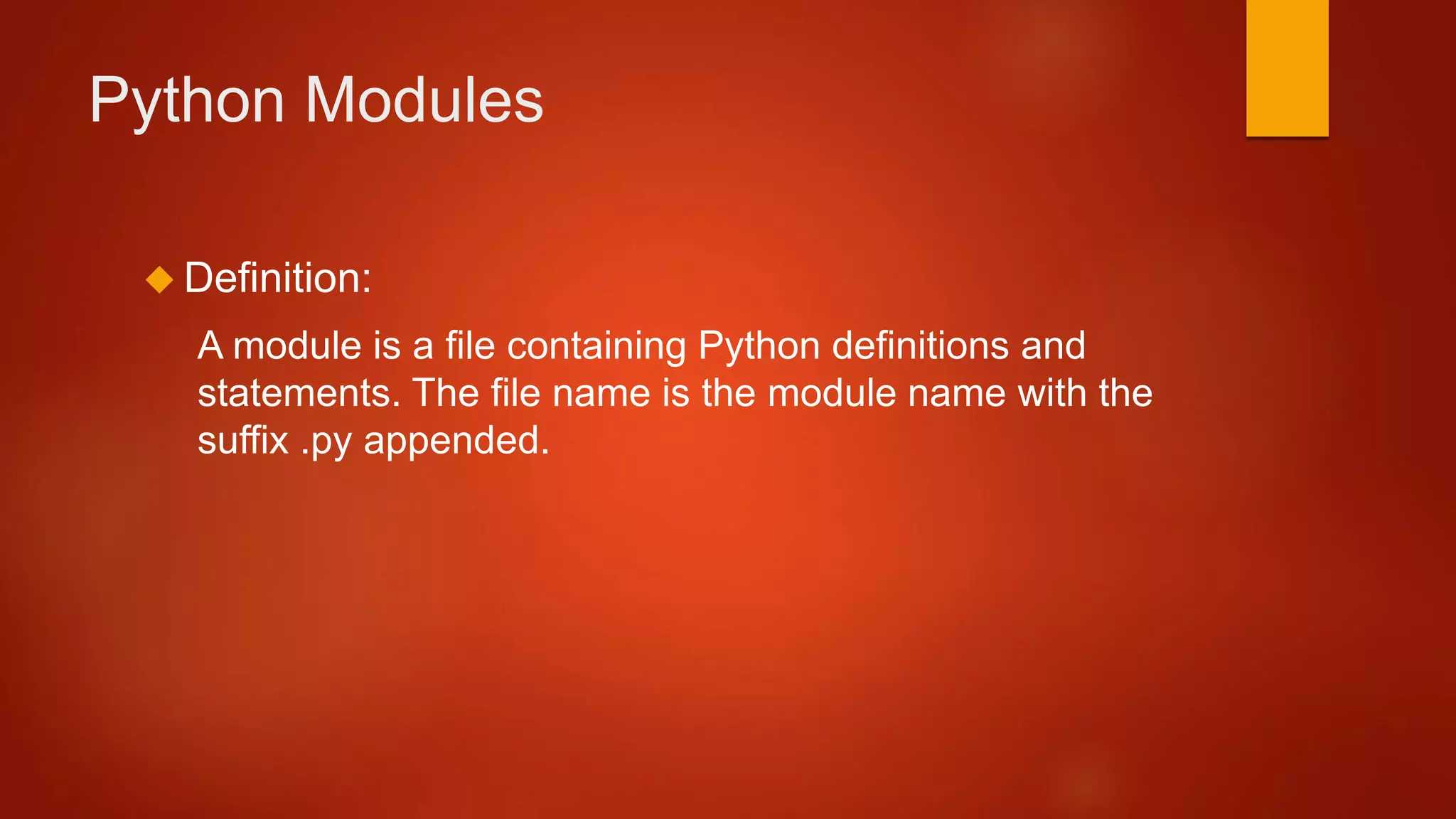
![Import Statement You can use any Python source file as a module by executing an import statement in some other Python source file. The import has the following syntax: import module1[, module2[,... moduleN]](https://image.slidesharecdn.com/introductiontoprogrammingwithpython-lecture5-140927102020-phpapp01/75/Introduction-To-Programming-with-Python-5-5-2048.jpg)
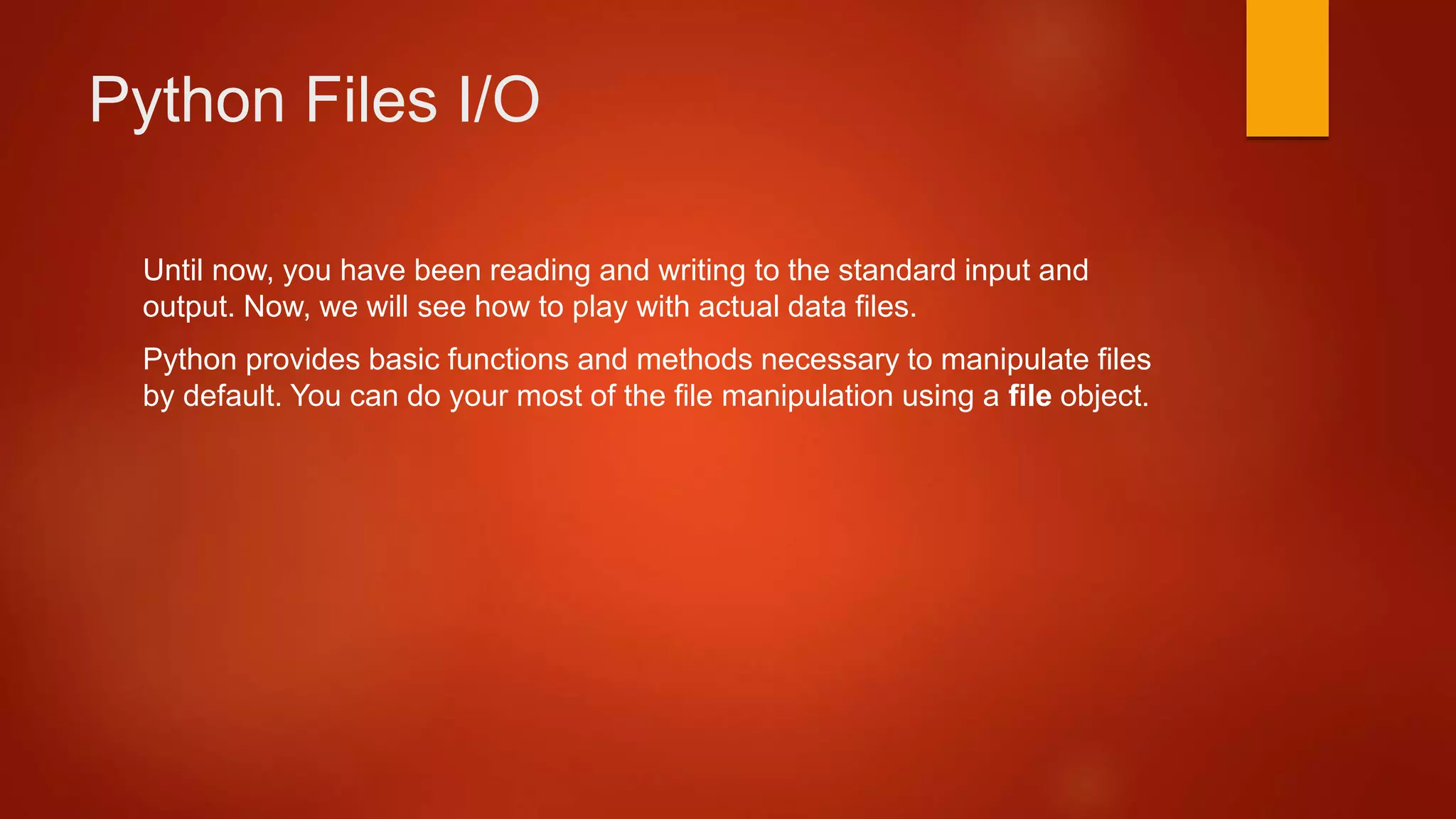
![The open() Function Before you can read or write a file, you have to open it using Python's built-in open() function. This function creates a file object, which would be utilized to call other support methods associated with it. Syntax: file object = open(file_name [, access_mode][, buffering])](https://image.slidesharecdn.com/introductiontoprogrammingwithpython-lecture5-140927102020-phpapp01/75/Introduction-To-Programming-with-Python-5-7-2048.jpg)
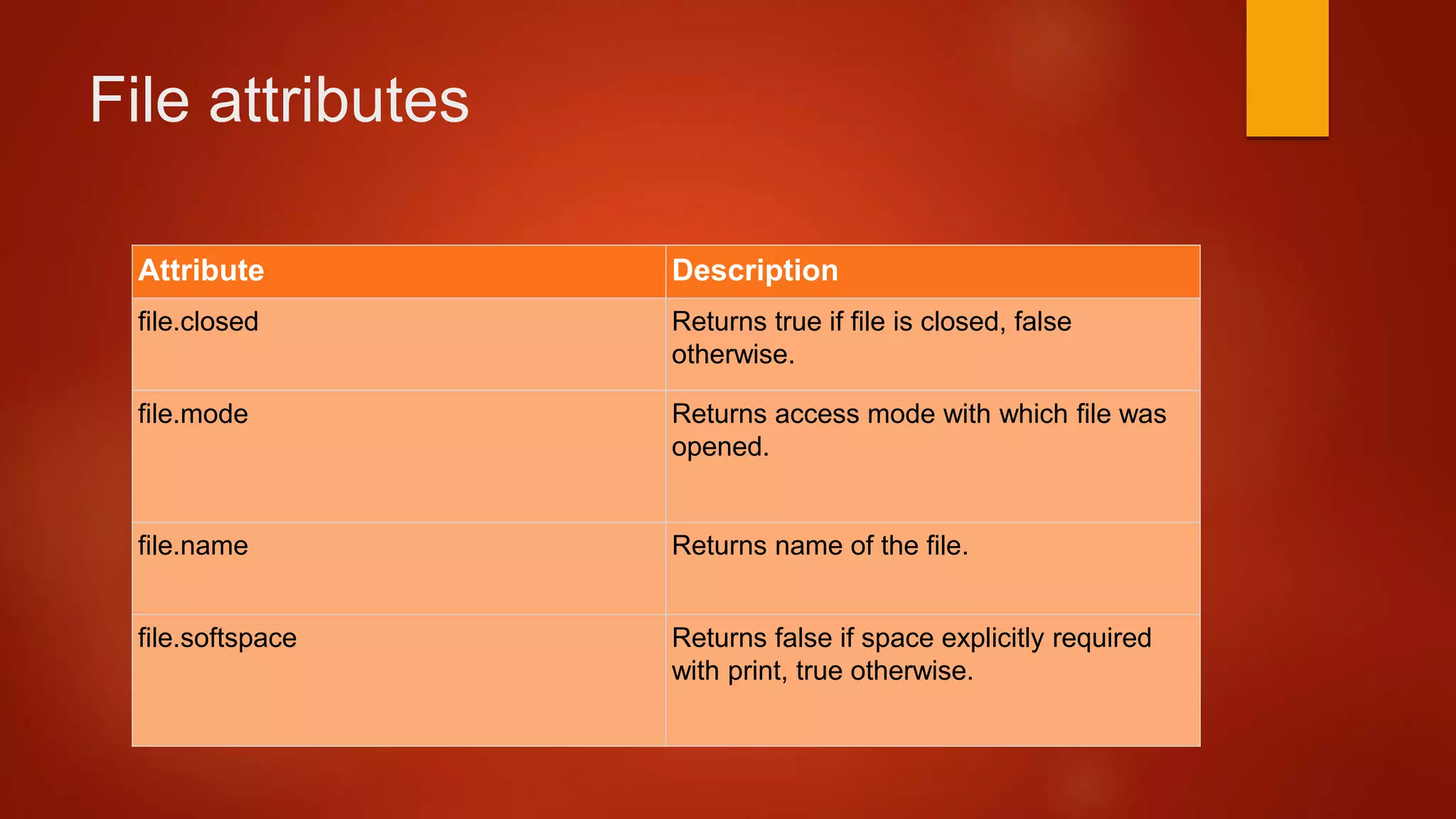
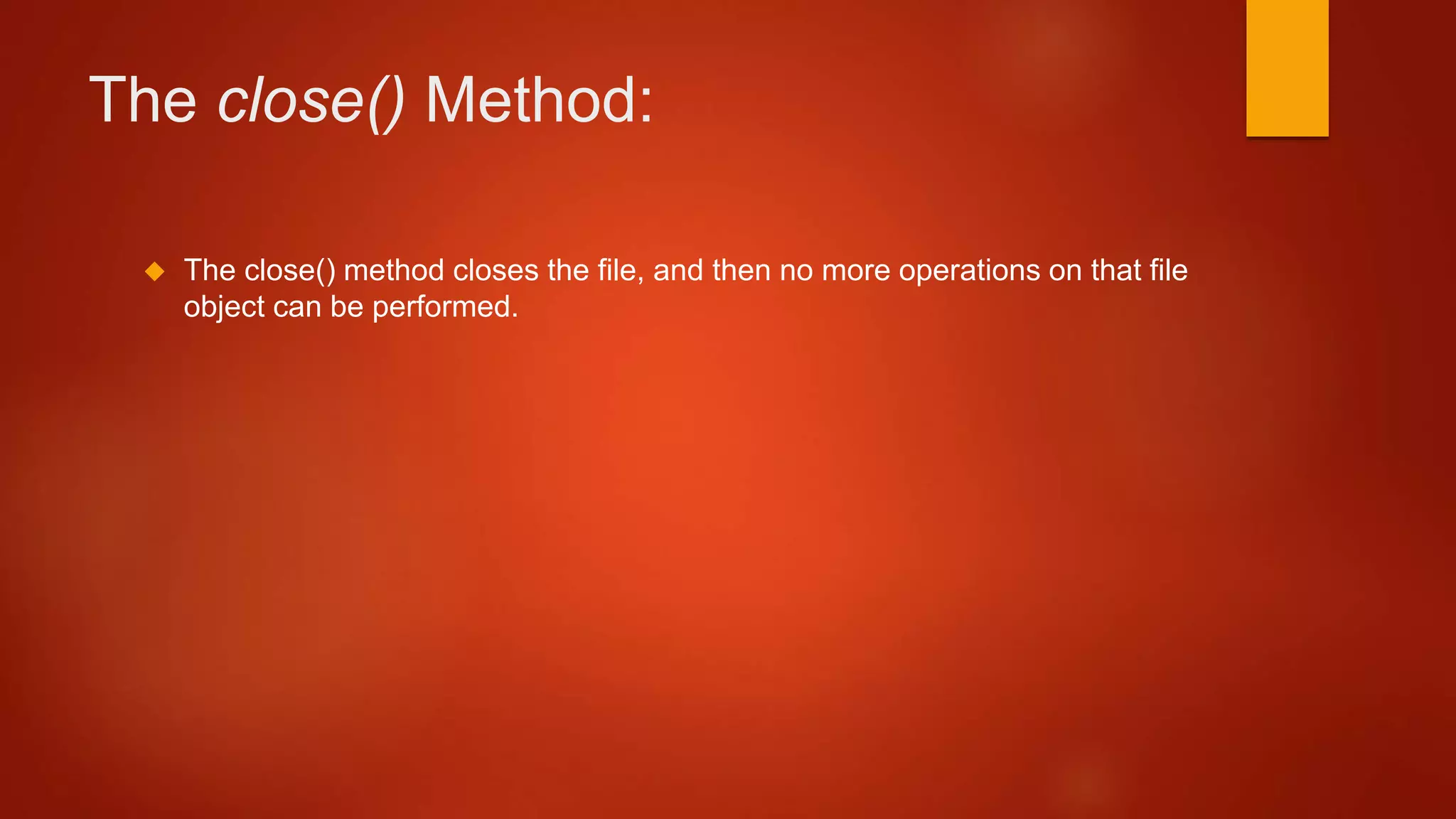
![The read() & write() method read() write() The read() method reads a string from an open file. The write() method writes any string to an open file. fileObject.read([count]); fileObject.write(string);](https://image.slidesharecdn.com/introductiontoprogrammingwithpython-lecture5-140927102020-phpapp01/75/Introduction-To-Programming-with-Python-5-10-2048.jpg)
